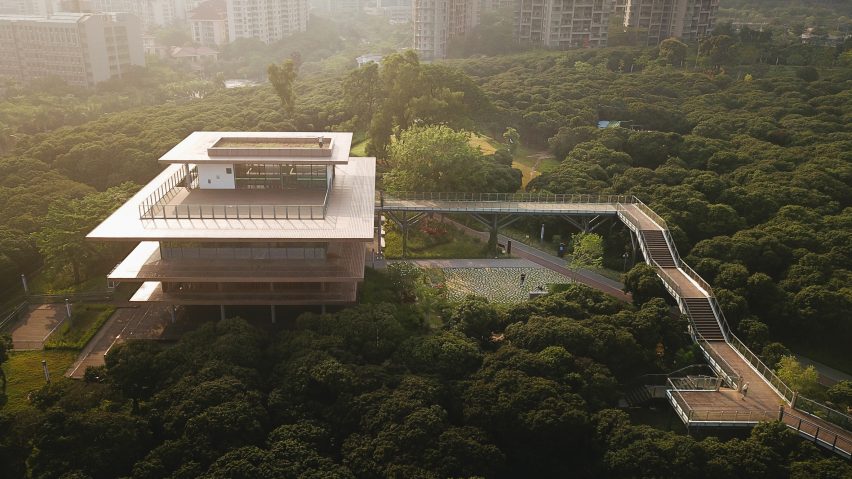
Eight elevated walkways designed to reach new heights
Following the news that architecture studio EFFEKT has unveiled Norway's first treetop walkway, our latest roundup collects eight pathways around the world that have been dramatically lifted above the ground.
Elevated walkways are pathways located above the ground, often connecting a series of structures such as towers or viewing platforms.
These walkways are raised to maximise the use of rooftop space or to offer panoramic vistas of their surroundings, whether they are urban or natural.
From locations ranging from central Rotterdam to a Japanese national park, here are eight striking elevated pathways from Dezeen's archive.
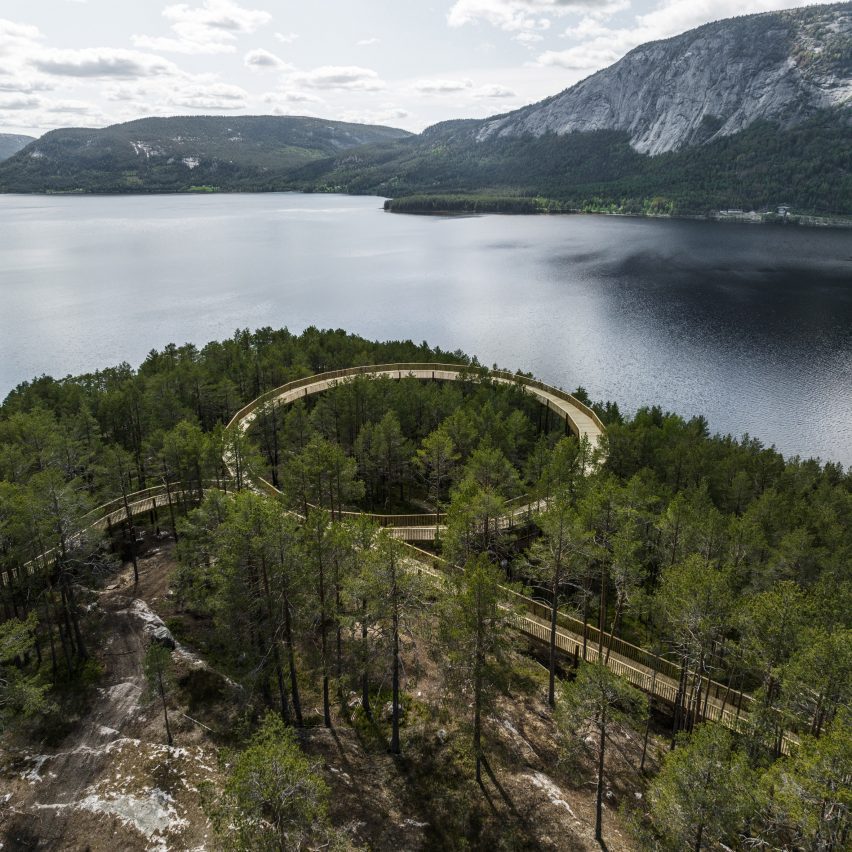
Walkway at Hamaren Activity Park, Norway, by EFFEKT
Danish studio EFFEKT recently completed Norway's first treetop walkway at Hamaren Activity Park in Fyresdal.
The winding, one-kilometre structure features a large circular viewpoint and was created specifically to cater to people of all ages and physical abilities.
"It grew out of a heartfelt desire to give all people, regardless of physical abilities, the sensational feeling of walking amongst the treetops," explained the studio.
Find out more about this walkway ›
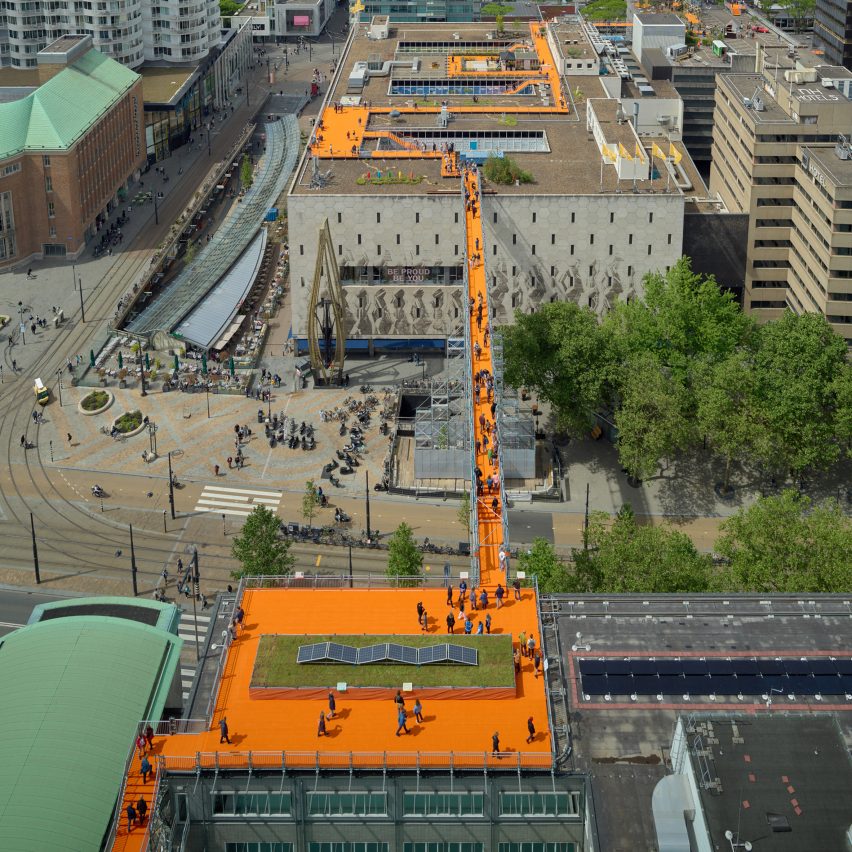
Rotterdam Rooftop Walk, the Netherlands, by MVRDV
Rotterdam Rooftop Walk was a temporary installation by MVRDV. Between May and June of last year, the 600-metre-long structure stretched between the city's World Trade Centre and its Bijenkorf department store to create a dramatic bridge.
Coloured in a bright orange hue, the walkway was supported by a scaffolding system and connected various green spaces and exhibitions designed to raise awareness about the usability of rooftops.
Find out more about Rotterdam Rooftop Walk ›
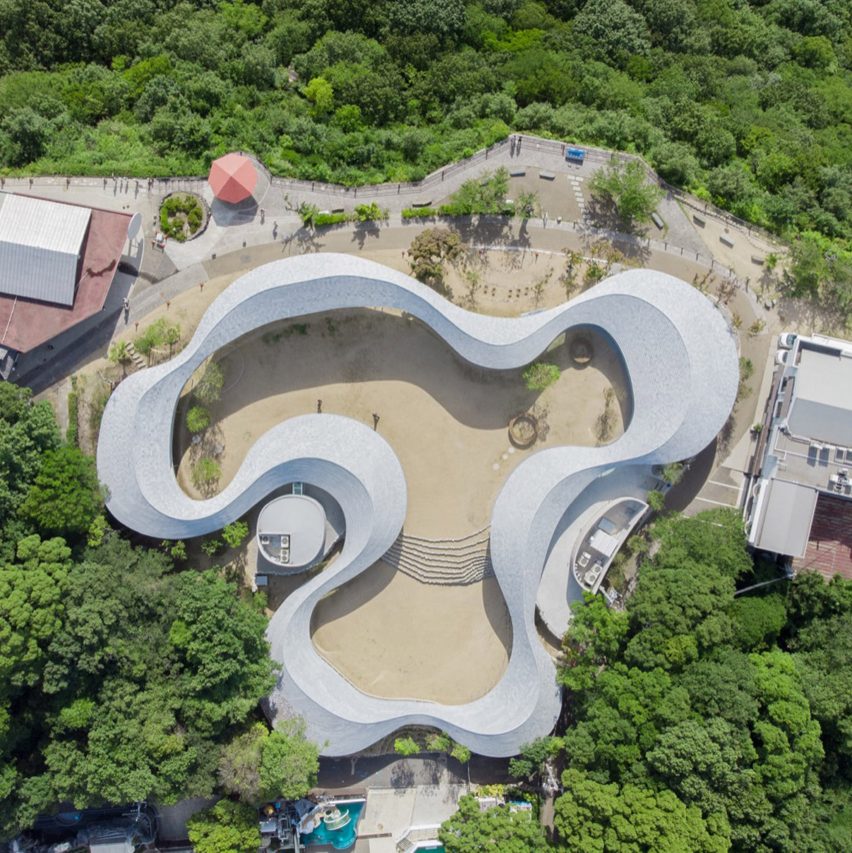
Yashima Mountaintop Park, Japan, by SUO
Kyoto-based studio SUO elevated an amorphous glass-pavilion walkway over the mountainous landscape of Setonaikai National Park in Japan.
Event and exhibition spaces, lookout points and a cafe were incorporated into the structure, which is supported by a concrete base on thin, white-steel columns.
Yashima Mountaintop Park rises and falls to negotiate a three-metre change in level on the site, allowing visitors to move underneath it and access the central courtyard and surrounding gardens.
Find out more about Yashima Mountaintop Park ›

Walkway at Viettel Academy Education Centre, Vietnam, by Vo Trong Nghia Architects
The textured brick volumes of Hanoi's Viettel Academy Education Centre were connected by a walkable concrete roof elevated by steel stilts.
As well as providing circulation for the building, the concrete structure features roof terraces and helps to shade areas of the ground floor below.
Find out more about this walkway ›
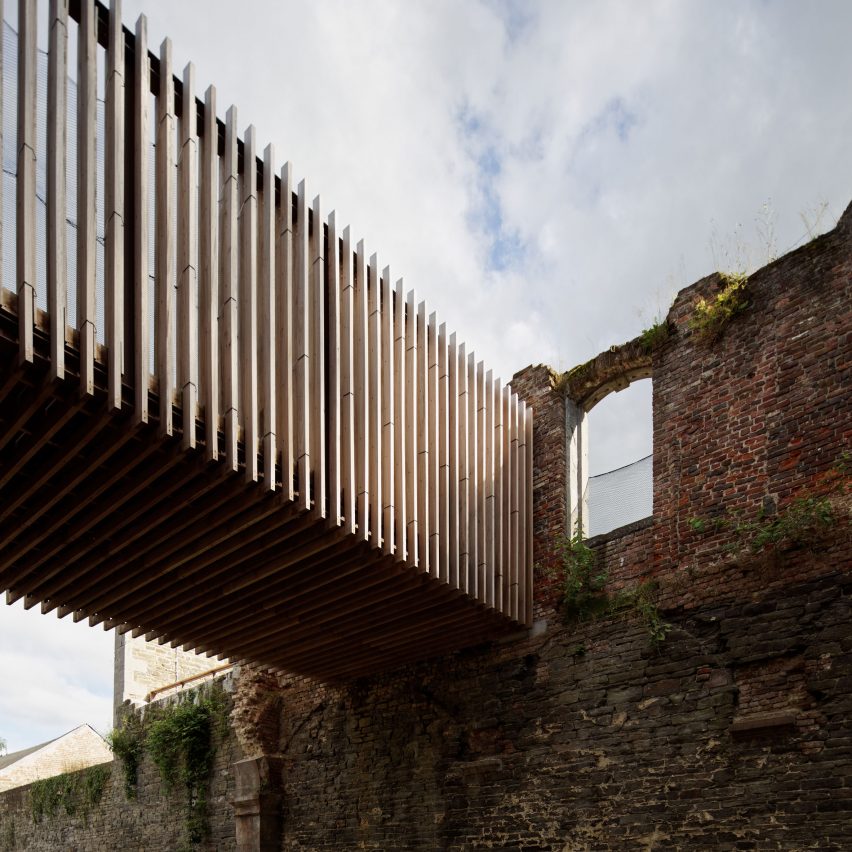
Walkway at Villers Abbey, Belgium, by Binario Architectes
An elevated pathway made from a combination of wood, concrete and Corten steel features at the 12th-century ruins of Villers Abbey in Belgium, where there is also a renovated visitor centre.
These materials were chosen to honour the site's historic structure, despite Binario Architectes' contemporary design.
"The range of new materials was chosen in order to strengthen the unity of architectural, landscape and scenographic interventions in the full site," explained the studio.
Find out more about this walkway ›
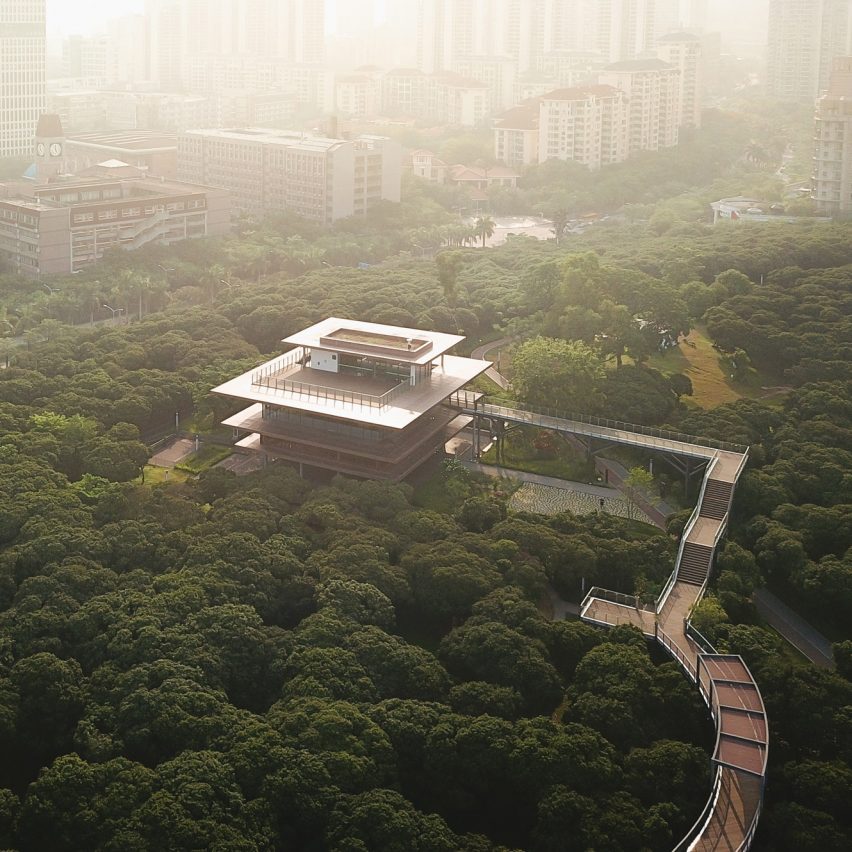
Walkway at Xiangmi Science Library, China, by MLA+
Global architecture studio MLA+ built a treetop walkway at the Xiangmi Science Library in Shenzhen's Xiangmi Park.
The elevated walkway connects the park with the library, which is characterised by cantilevered roofs made from powder-coated metal that intend to reference local vernacular architecture.
Arranged across the lush landscape, the walkway was designed to give the complex an additional purpose as an observatory.
Find out more about Xiangmi Science Library ›
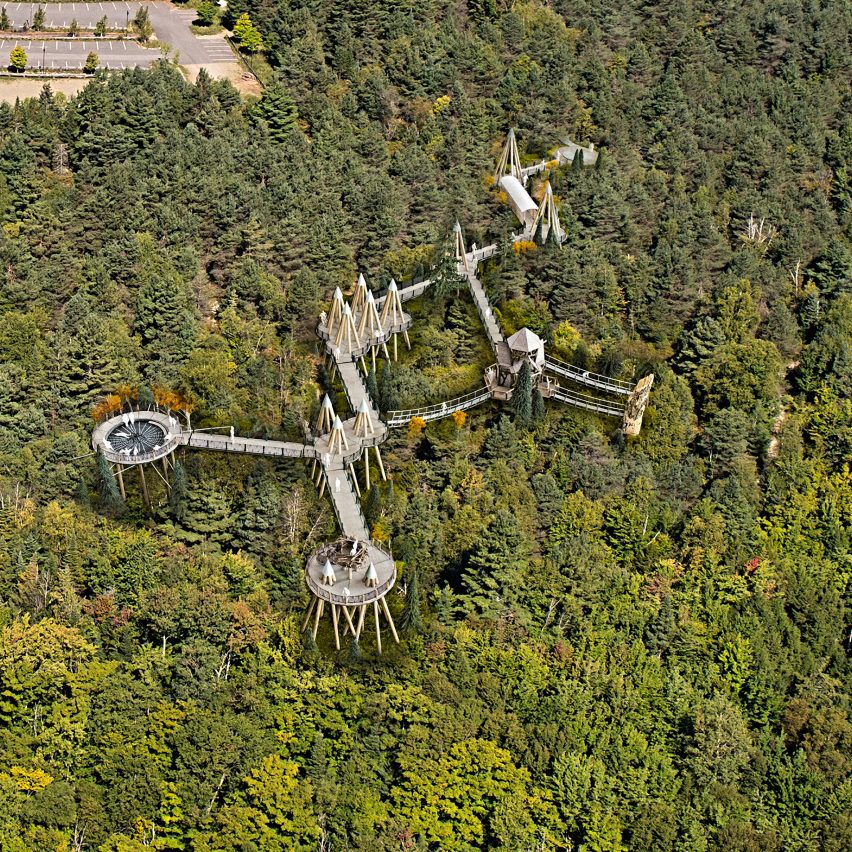
Wild Walk, USA, by Charles P Reay
Pointed towers made from weathering-steel tubes support elevated pathways and bridges that allow visitors to walk among the treetops at Adirondack Park in Upstate New York.
Designed by architect Charles P Reay, Wild Walk takes cues from New York City's famed High Line project, which is a raised park on the site of a former railway line.
Find out more about Wild Walk ›
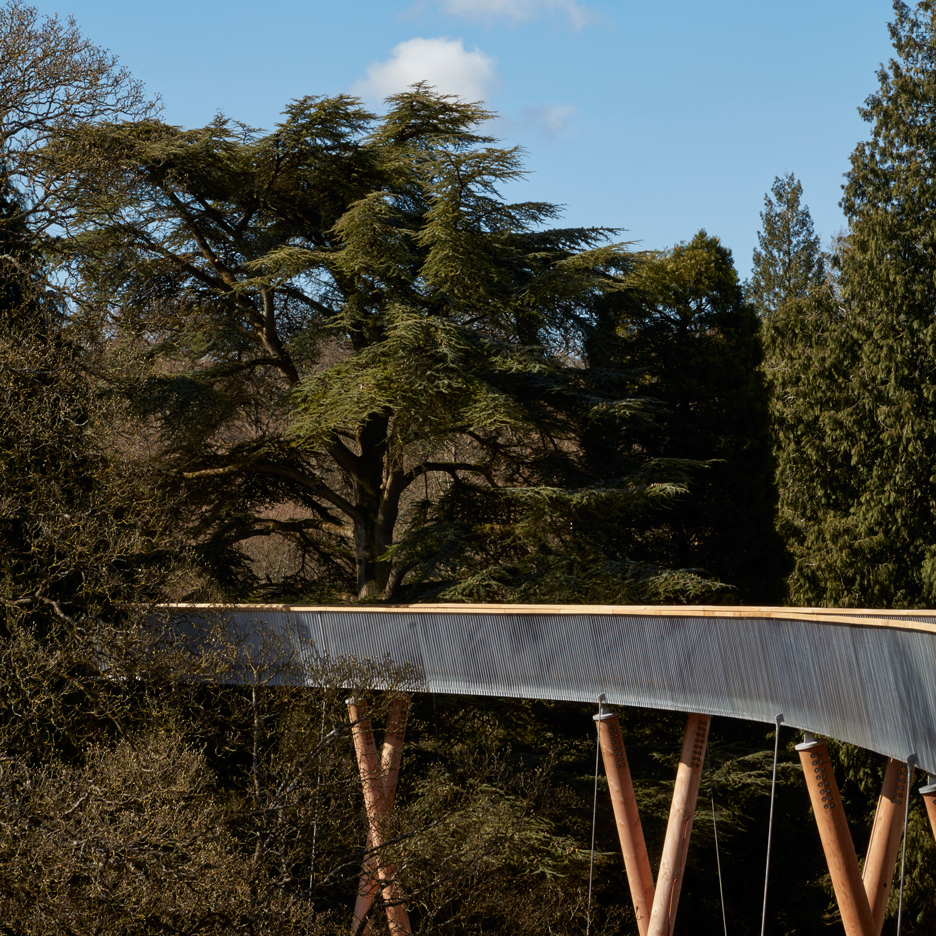
The Treetop Walkway, UK, by Howells
Located at the Westonbirt arboretum in the English county of Gloucestershire, The Treetop Walkway was designed by Howells architecture studio, which was until recently known as Glenn Howells Architects.
Spanning 300 metres in length, the walkway starts and finishes at ground level but ascends to 13 metres at its highest point. It is supported by a cluster of crisscrossing wooden stilts that blend with the surrounding greenery.
"Focussing on visitor needs and materiality, the walkway is designed to disappear as a sinuous silver ribbon that meanders between trees and canopies," said architect Glenn Howells.
Find out more about The Treetop Walkway ›